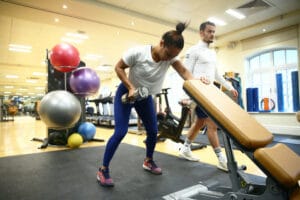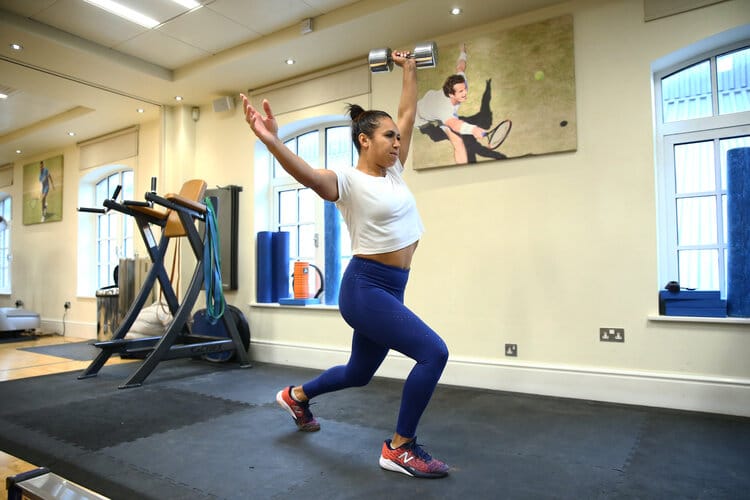By LTA’s Anna Poyser | UPDATED: 05:28, 06 February 2020
With GB’s Fed Cup qualifying tie with Slovakia taking place on the 8th February, the LTA’s Physiotherapist, Anna Poyser gives her insight on how to stay fit and injury free during your fitness training.
It is well documented that regular sport participation or physical activity can improve health and quality of life. There is, however, a cost of physical activity, namely the burden of injuries. It is part of a physiotherapist’s job to reduce this risk. Flexibility and mobility training has always been an integral part of most athletic training programmes and something everyone should try and work into their daily fitness routines.

The words ‘flexibility’ and ‘mobility’ – are often used together but are in fact not the same things. Flexibility refers to your ability to passively stretch a muscle or group of muscles through a range of motion, whereas mobility refers to the strength to hold this flexibility with control and at optimal levels, produce force too.
By having good flexibility and mobility, our body is free to move without straining or forcing muscles to stretch beyond their capable range. Mobility and flexibility underpin everything else that you train for because it refers to our ability to move.
Playing sport requires athletes to perform a variety of feats of coordination and strength whilst being able to hold difficult stretches on the move. For example, a tennis player may have to hold a semi-squat position throughout a point, or perform athletic lunges out to wide balls holding good posture to ensure optimum recovery after a stroke. This is consistent with most other forms of fitness activity that require a range of both flexibility and mobility, which can be trained either in isolation or carefully through the exercise itself.
One way you can do this is by shadowing specific movements that you will make during your exercise through a controlled warm-up. For example, if you find yourself playing a sport or exercise that requires you to rotate your shoulders frequently, then try using a broom-like stick to extenuate the rotation of the upper body and the need to hold strong posture. Taking 5 minutes your of your warm-up to simulate these types of movement will help reduce strain on your muscles and risk of injuries in the long-term.
However, when it comes to mobility, there is no one-size-fits all programme, but if you really want to make all the gains, it’s time to work mobility into your week.
Watch the GB Fed Cup team take on Slovakia in Bratislava on 7 and 8 February live on LTA – Tennis for Britain on Facebook, BBC Sport and the BBC red button. Catch all the behind-the-scenes action by following the LTA on Twitter (@the_LTA) and Instagram (@lta).
